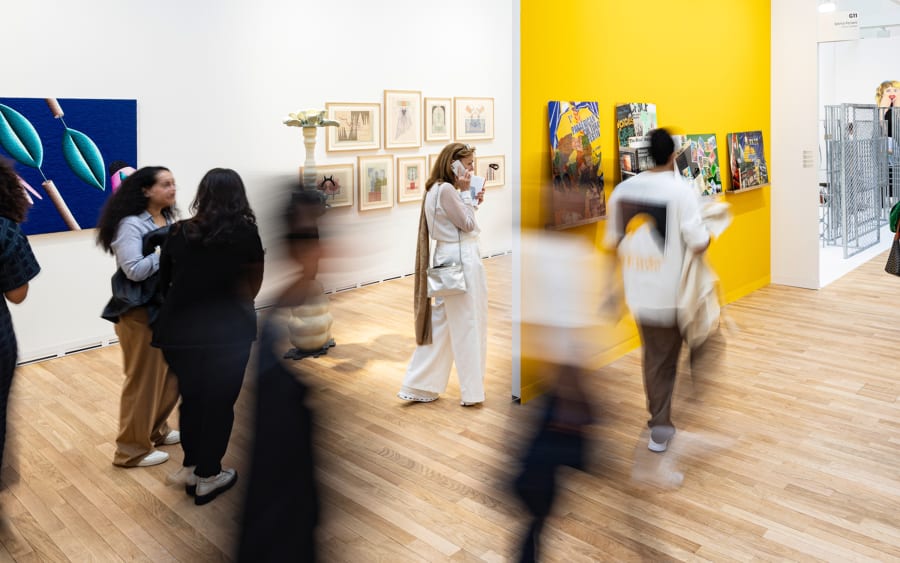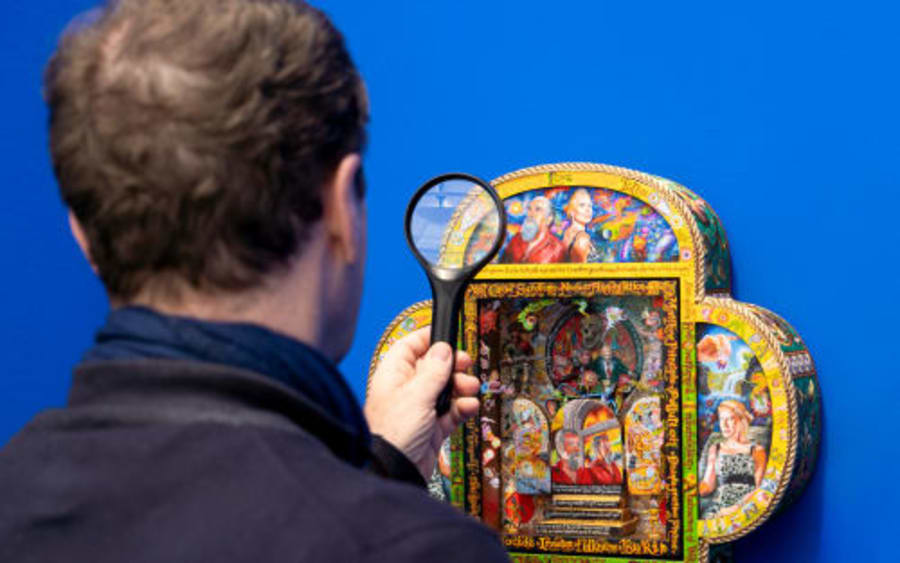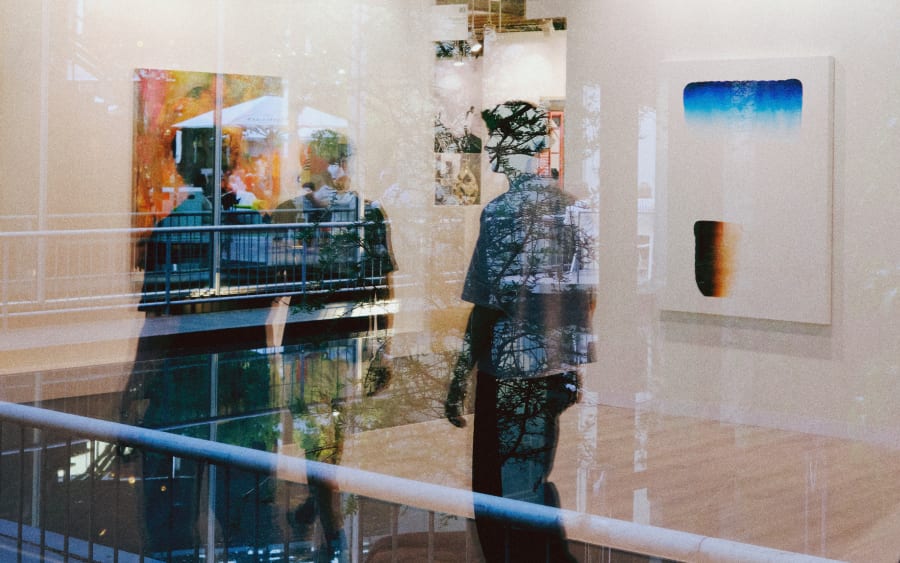The new power buyers: How women are rewriting the rules of art collecting
Women collectors are outspending men — and taking bigger, smarter risks. The latest Art Basel & UBS Survey of Global Collecting reveals a generation of women reshaping the market
The new power buyers: How women are rewriting the rules of art collecting
Women collectors are outspending men — and taking bigger, smarter risks. The latest Art Basel & UBS Survey of Global Collecting reveals a generation of women reshaping the market
The new power buyers: How women are rewriting the rules of art collecting
Women collectors are outspending men — and taking bigger, smarter risks. The latest Art Basel & UBS Survey of Global Collecting reveals a generation of women reshaping the market
The new power buyers: How women are rewriting the rules of art collecting
Women collectors are outspending men — and taking bigger, smarter risks. The latest Art Basel & UBS Survey of Global Collecting reveals a generation of women reshaping the market
The new power buyers: How women are rewriting the rules of art collecting
Women collectors are outspending men — and taking bigger, smarter risks. The latest Art Basel & UBS Survey of Global Collecting reveals a generation of women reshaping the market
Women spent, on average, 46% more than men on art and antiques in 2024. It is a figure that catches the eye, and a sign of how women are reshaping the art market from the top down. This year’s Art Basel & UBS Survey of Global Collecting by Arts Economics gives the clearest picture yet of female collectors operating across the global art market: what they buy and how they buy.
In prior surveys – this is now the 12th edition – the sample of high-net-worth individuals (HNWIs) tended to skew male. This year it was designed with a near-even split (51% women, 49% men), allowing for differences between genders to be assessed with confidence.
‘I wanted to build a profile of the female collector – not only to see what women were buying, and how they were buying, but also, given the very uncertain market we’re in, to look at their risk sensitivities and willingness to take risks,’ says Dr. Clare McAndrew, the founder of Arts Economics and author of the report.
Across both genders, the average spending in 2024 was USD 438,990 on an average of 14 works. This high average (the median was a more modest USD 24,000) was primarily driven by a small group of female collectors from Mainland China, whose averages were more than twice those of their male compatriots.
‘There are pockets of very high spending,’ McAndrew says. ‘In Mainland China in particular, a small but very wealthy group of women are spending a lot on art – quite a bit more than men. Over the past few years their influence has grown – building private collections, setting up museums. It’s a small cohort, but they’re holding their own in terms of purchasing power.’
So women led in spending, but what were they buying? Women collected more – and spent more on – works by female artists. The gender gap was widest among boomer collectors, where women spent a 10% higher share on works by female artists than men. This was reflected in their holdings: 49% of the works in their collections were by female artists compared with just 40% in men’s.
Some of the most striking points of difference related to what might be perceived as riskier purchases. Women were much more likely to buy the work of an unknown artist (55% versus 44% for men). They allocated a lower share of spending to traditional mediums such as paintings and a higher share to digital art – a detail that is at odds with the stereotype that ‘tech bros’ drive sales at the top end of this segment.
Many of these findings come from the report’s first dedicated study of risk in art collecting. ‘Most of the academic literature casts women as more risk-averse in fields like finance, sports, and healthcare,’ McAndrew says. ‘In our research the picture is more nuanced. Female collectors are clear-eyed about risk and often more attuned to it – but, despite this, they are more likely to act and take chances when it comes to their collecting. You could say they feel the fear and do it anyway.’
In the art market, risk is not only financial – it is also social. Women were more likely than men to admit publicly that their taste in art differed from their peers’, even though many judged that stance to carry a reputational cost.
The research found that HNWIs were more loss-averse with their art collections than with their financial investments – a tendency that can push collectors toward established and peer-sanctioned choices.
‘One of the ways that you can reduce risk is to copy what somebody successful has already done before you,’ McAndrew says. ‘This can create this superstar issue in the art market, where there is a focus on a narrow group of popular artists, while others that are equally talented get pushed to the wayside.’
This is why the gender differences matter. UBS estimates that women controlled more than a third of global wealth by the end of 2024 – a share set to rise as the so-called Great Wealth Transfer sees wealth move not only down the generations but across to female spouses and partners. (At the very top of the wealth pyramid, however, women accounted for only 14% of billionaires in 2025.)
As women and younger generations command more capital, their choices are set to reshape the art market. And with these cohorts branching out and taking greater risks, capital is expected to follow them into new categories and channels.
However, even as these collectors became more open to discovering new artists, the value of spending shifted toward the established. McAndrew suggests this may be a sign of collectors becoming a little more risk-averse in 2025 as a response to the prevailing uncertainty in global markets.
This increasing breadth of collecting is most visible in Gen Z. They are omnivore collectors – among the most active buyers in both the fine art segment and collectibles and luxury goods. However, far from abandoning traditional mediums, Gen Z were ahead of millennials and Gen X in purchases of paintings by a notable margin.
Paintings remained the largest segment by value, accounting for 27% of total fine art spending in 2024, even as their share slipped. Digital art saw a big uplift, with just over half (51%) of the HNWIs surveyed buying a digital artwork in 2024/2025. Gen Z collectors were the catalyst for growth in collectibles, which accounted for 56% of their aggregated spending in 2025. They spent more than any other age segment on items such as luxury handbags and collectible sneakers (almost five times the level of any other generational group).
‘The youngest collectors are still buying fine art, and that’s where a good share of the value of the spending sits,’ McAndrew says. ‘But they’re transacting really quite frequently across a range of collectibles and reaching the market in new ways.’
Galleries and fairs remain the backbone when it comes to how HNWIs are buying art: 83% of respondents had bought through a dealer and the share of collectors purchasing at art fairs increased to 58% from 39% in 2023. Yet it is notable just how quickly the marketplace for finding and buying art is changing. ‘Disintermediation of the market is something we’ve been talking about on panels for years. Now there is more evidence of it actually happening,’ McAndrew says.
Among those who had purchased from a gallery in 2024/2025, 51% had bought at least one work via Instagram without viewing it in person first (up from 41% in 2023). More pronounced still was the rise in the share of HNWIs buying directly from artists. A total of 63% of those surveyed had purchased at least one work from an artist, up from 27% in 2023 and 43% in 2022. In terms of total spend, buying direct from artists was the second-largest channel by value (accounting for 20%) – more than double the share reported for 2023.
So the survey portrays a market in transition. In 2025, there are more routes than ever from studio to wall, as traditional players adapt to a new generation of collectors and artists who want to do things differently.
This survey is the 12th in a series conducted in collaboration with Arts Economics and UBS. The report now covers 10 markets, with responses from 3,100 HNWIs, including 1,575 women, and remains one of the largest surveys of high-net-worth collectors globally.
Download The Art Basel and UBS Survey of Global Collecting 2025 here.
Caption for header image: Artworks by Ash Love presented by Exo Exo in the Emergence sector of Art Basel Paris 2025.
Published on October 24, 2025.



